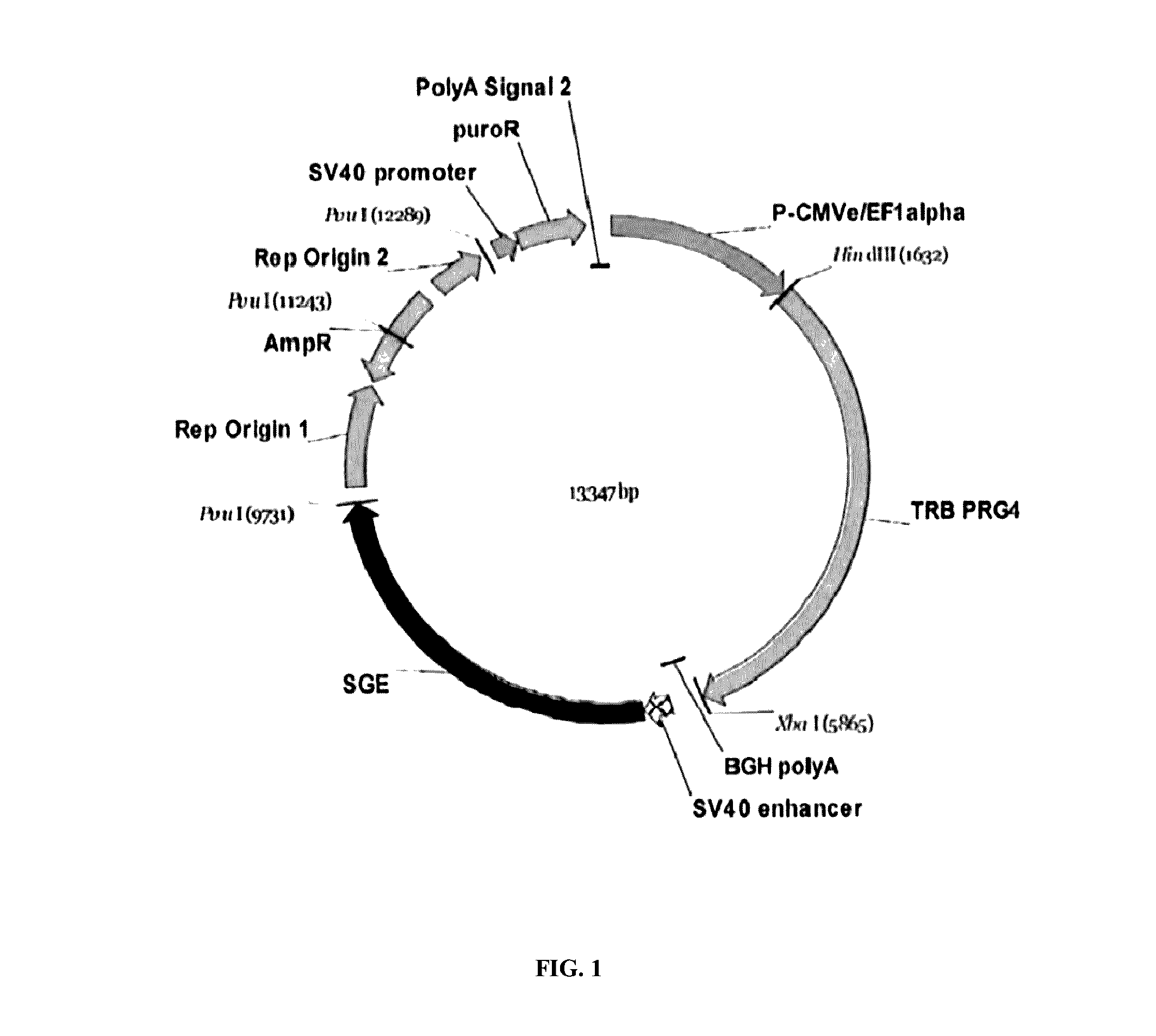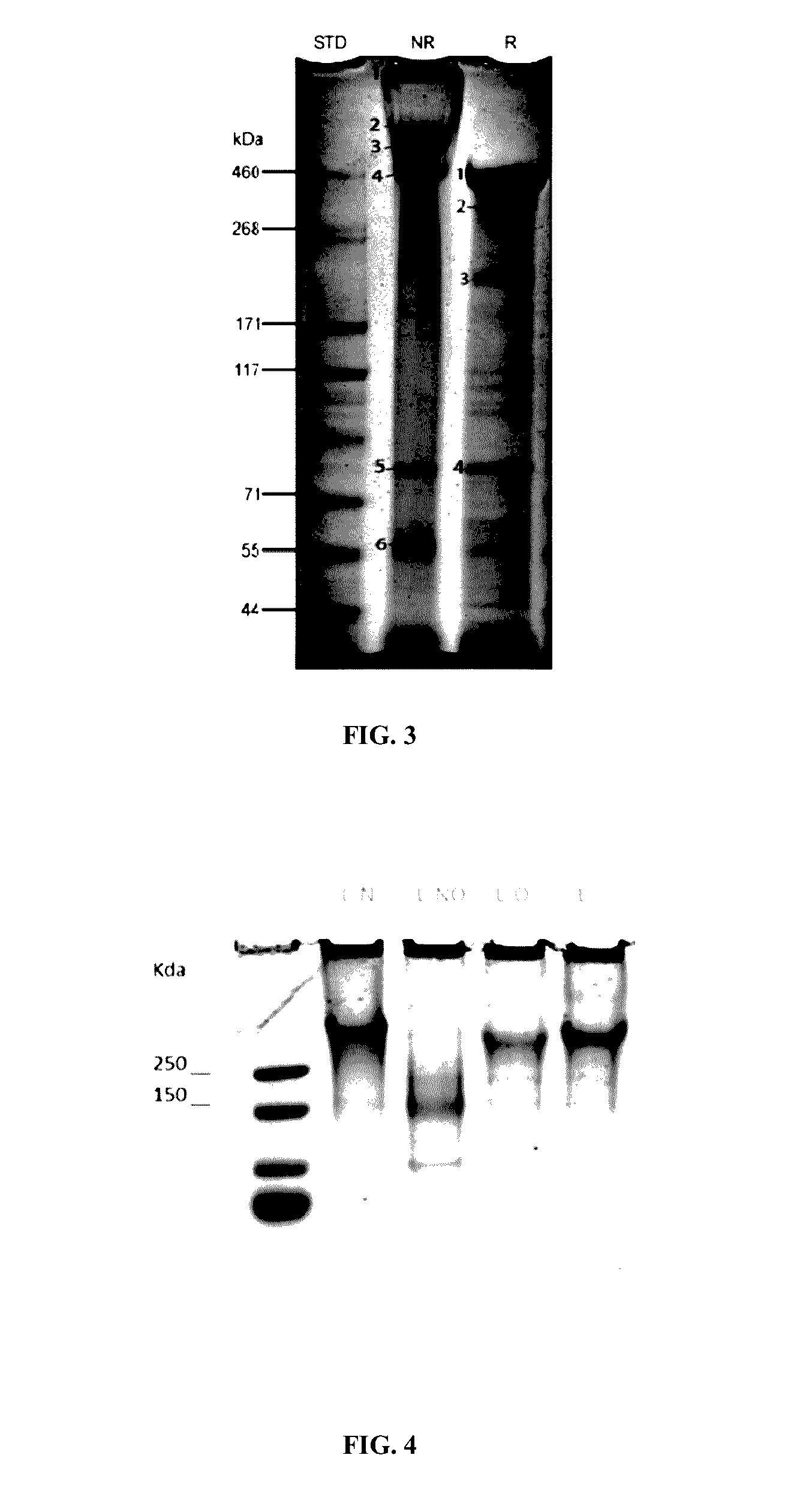Production of recombinant lubricin
a technology of lubricin and cho cells, which is applied in the field of recombinant lubricin production, can solve the problems of low production rate of human lubricin species expressed from cho cells, inability to fully duplicate the low, and inability to achieve the full-length production of lubricin at a scale suitable for commercial exploitation, etc., to achieve the effect of reducing joint wear
- Summary
- Abstract
- Description
- Claims
- Application Information
AI Technical Summary
Benefits of technology
Problems solved by technology
Method used
Image
Examples
Embodiment Construction
[0049]The inventors hereof investigated options for the production of the known human lubricin glycoprotein using recombinant DNA techniques, with the goal of generating a production process involving suspension culture exploiting mammalian cells in serum-free growth medium. Unlike any previous effort known to applicants to produce proteins using recombinant DNA techniques, the challenge was to produce commercial quantities of a complex, large biopolymer who's value lay in its nanoscale mechanical properties, as opposed to its biochemical properties, and those physical properties were dependent on successful exploitation of post translational glycosylation events at a scale never before observed in an engineered cell.
[0050]Previous attempts at recombinant production of full length lubricin had yielded only low milligram per liter quantities, and a method of producing at least about one to two grams per liter was needed. A review of the literature revealed no reports of successful re...
PUM
| Property | Measurement | Unit |
|---|---|---|
| concentration | aaaaa | aaaaa |
| concentration | aaaaa | aaaaa |
| concentration | aaaaa | aaaaa |
Abstract
Description
Claims
Application Information
 Login to View More
Login to View More - Generate Ideas
- Intellectual Property
- Life Sciences
- Materials
- Tech Scout
- Unparalleled Data Quality
- Higher Quality Content
- 60% Fewer Hallucinations
Browse by: Latest US Patents, China's latest patents, Technical Efficacy Thesaurus, Application Domain, Technology Topic, Popular Technical Reports.
© 2025 PatSnap. All rights reserved.Legal|Privacy policy|Modern Slavery Act Transparency Statement|Sitemap|About US| Contact US: help@patsnap.com



